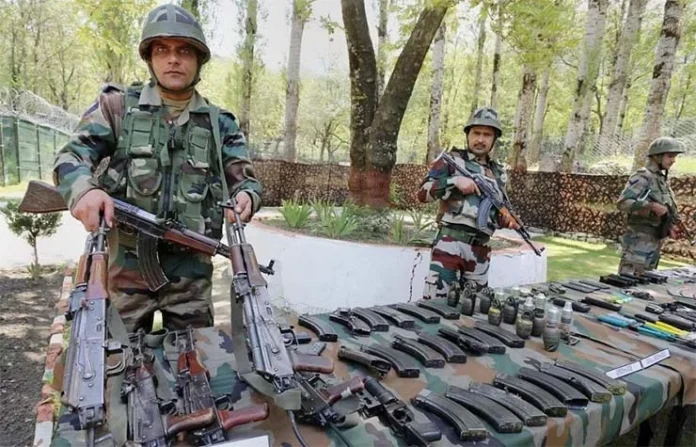New Delhi: Rising conflicts globally have posed challenges and disrupted supply chains. The ongoing war in Ukraine and before that the Ladakh stand-off made it imperative that a clear road map for ammunition procurement and long –term requirement should be in place.
According to defence sources, the efforts to secure supply chains and avoid any impact on operational preparedness has led to finalisation of the long-term requirement for a decade and a clear road map for ammunition procurement has been put in place. About 85% of the ammunition requirement has been indigenised, from both the public and private sectors, sources added.
A defence source in the know said, “The aim is to build up ammunition stocks to desired levels, minimise imports and achieve self-sufficiency in the country, have multiple sources of supply, and possess indigenous manufacturing capability. First step is to indigenise all import-dependent ammunition — major platforms with long-term requirement.”
Indigenisation of more than 30 variants, amounting to about Rs 16,000 crores as part of import minimisation, is under way and five or six variants of ammunition have been identified for production through the Indian industry, which will expand the indigenous vendor base, the source said and further added that subsequently, next-generation high-tech ammunition based on research and development is being identified for in-house development.
Providing insight into the break-up of ammunition procurement between domestic production and imports, sources said that a bulk of it is being met by the Defence Public Sector Undertakings and the rest by the Indian industry. A second source added that less than 10% is met purely through direct imports and there is also some amount of legacy platforms in small numbers that are in the process of being phased out.
Under the three rounds of emergency financial powers granted by the Defence Ministry, the armed forces had undertaken major procurement and stocking of spares and ammunition. The fourth round of emergency procurement was completed recently and it ensured enough stocks of critical ammunition and also helped offset delays to some extent in deliveries of spares, components and ammunition since the war in Ukraine broke out in February 2022.
Most of the Indian Army’s armoured fleet is of Russian-origin and the air defence has several legacy systems. Currently, about 10 to 12 ammunition categories in over 30 variants are being indigenised on priority and these are undergoing field trials.
With several Indian private companies now in the race to manufacture ammunition in the country, the ammunition stocking through indigenisation efforts will help Army’s operational preparedness to meet future threats.





